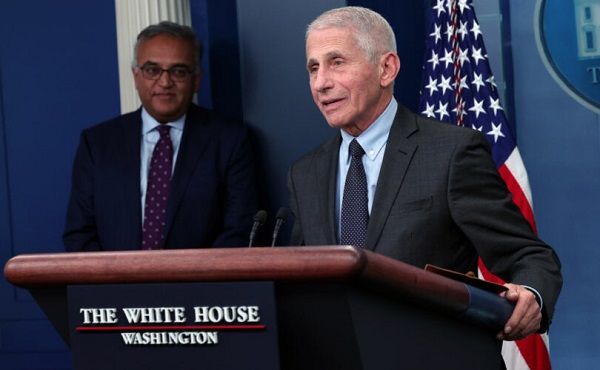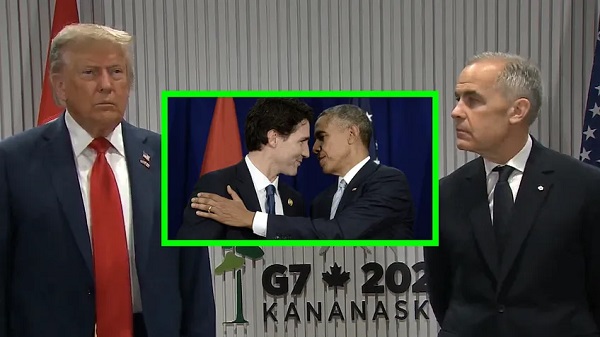International
Biden admin considering ‘preemptive pardons’ for Fauci, Liz Cheney, Adam Schiff, Mark Milley: report

From LifeSiteNews
The behind the scene discussions come in the wake of Biden’s controversial pardon of his son, Hunter, and likely intensified following Trump’s nomination of Kash Patel as FBI director.
Top aides in the Biden administration are debating the possibility of issuing blanket preemptive pardons for government officials as a means of protecting them from future inquiries and indictments after Donald Trump returns to the White House.
At the top of the list of those being considered for the extraordinary pardons are Dr. Anthony Fauci, Senator-elect Adam Schiff (D-California), and former GOP representative Liz Cheney; according to Politico, which broke the story.
The behind the scenes discussions come in the wake of Biden’s controversial pardon of his son, Hunter, and likely intensified following Trump’s nomination of Kash Patel as FBI director. Patel has made it clear that he intends to hold public officials accountable for their outrageous, unjustified actions against the former president.
“End-of-administration pardons are always politically fraught. But President George H.W. Bush’s intervention to spare former Defense Secretary Caspar Weinberger and Bill Clinton’s pardon of financier and donor Marc Rich seem quaint compared with what Biden officials are grappling with as Trump returns to the presidency with lieutenants plotting tribunals against adversaries,” wrote Politico’s Jonathan Martin. “And that was before the president pardoned his son, infuriating many of his own party already angry at Biden for insisting on running for reelection as he neared 82.”
“Now, Biden’s aides also must consider whether they should offer the same legal inoculation to public officials who’ve attracted the ire of Trump or his supporters that the president granted his convicted son,” he added.
Dr. Anthony Fauci
Dr. Anthony Fauci, the former head of the National Institute of Allergy and Infectious Diseases – who was the frontman for the government/Big Pharma extreme COVID-19 jab mandates, lockdowns, and masking measures, as well as the chief promoter of the now disproven “COVID-19 was not created in a Wuhan lab” lie – has long been in the crosshairs of those critical of the government’s audacious response to the COVID pandemic.
Fauci has also been cited for use of a private email account to conduct government business in order to escape scrutiny.
During Capitol Hill hearings, Sen. Rand Paul has been relentless in calling out Fauci’s repeated evasive and mendacious testimony attempting to avoid responsibility for the government’s outrageous, tyrannical response to COVID-19 and subsequent cover-up measures.
“For his dishonesty, frankly, he should go to prison,” said Sen. Paul during a radio interview. “If you lie to Congress, and you’re dishonest, and you won’t accept responsibility. For his mistake in judgment, he should just be pilloried.”
Liz Cheney and Adam Schiff
Liz Cheney and Adam Schiff were leading members of the January 6 committee, which many have criticized as serving to promote public outrage against Trump and America First conservatives while covering up the actions of undercover FBI and other law enforcement who infiltrated and incited the crowd following Trump’s January 6, 2021 “March to Save America” rally.
“The central cause of Jan. 6 was one man, Donald Trump, who many others followed,” declared Cheney, who lost her primary bid by an historic margin in 2022. “President Trump had a premeditated plan to declare that the election was fraudulent and stolen before Election Day.”
Schiff argued during the hearings that Trump had “incited that angry mob to march on the Capitol” on January 6 and “knew they were armed and dangerous.”
Schiff was also the lead U.S. House prosecutor in the Senate’s first Trump impeachment trial.
General Mark Milley
Former chairman of the Joint Chiefs of Staff, Gen. Mark Milley, came under fire from not only Trump, but Republicans in Congress, active and retired military, and American patriots across the country for the horrific U.S. military withdrawal from Afghanistan that left 14 U.S. servicemen and women dead and let tens of billions of dollars worth of equipment fall into the hands of the Taliban.
Milley also reportedly called his then-military counterpart in China at the time of the 2020 election and promised that he would warn him if the U.S. planned to attack China, an act which was seen as “treason” by Trump.
Sen. Marco Rubio, Trump’s nominee for secretary of state, said at the time that Milley had undermined the commander in chief and “contemplated a treasonous leak of classified information to the Chinese Communist Party in advance of a potential armed conflict.”
Preemptive pardons
Preemptive pardons are extremely rare but not without precedent.
President Gerald Ford pardoned Richard Nixon “for all offenses against the United States which he… has committed or may have committed or taken part in during the period from July (January) 20, 1969 through August 9, 1974.”
In 1977 Jimmy Carter pardoned all Vietnam-era draft dodgers, and in 2017, Donald Trump issued a pardon to former Sheriff Joe Arpaio that mentioned “any other offenses that might be charged” in addition to those specifically mentioned.
Daily Caller
‘Not Held Hostage Anymore’: Economist Explains How America Benefits If Trump Gets Oil And Gas Expansion


From the Daily Caller News Foundation
Economist Steve Moore appeared on Fox Business Tuesday to discuss what he called the significance of expanding domestic oil and gas production in the United States.
President Donald Trump’s Executive Order 14154 aims to secure U.S. energy independence and global leadership by awarding 10-year oil and gas leases. During an appearance on “The Bottom Line,” Moore said that if Trump’s energy policies succeed then America will no longer have to rely on foreign oil.
“If Trump goes forward with what he wants to do, and our energy secretary is all in on this, produce as much oil and gas as we can here at home in Texas and North Dakota and Oklahoma and these other states. Then we’re not held hostage anymore to what’s happening in the Middle East,” Moore said. “That’s what’s so frustrating. We have more of this stuff than anybody does.”
WATCH:
Moore then pointed to some of former President Joe Biden’s early decisions, particularly the cancellation of pipelines. Moore said these actions left the U.S. vulnerable to external energy crises.
“I don’t want to overemphasize the Strategic Petroleum Reserve. It’s good that we have this sort of safety knot in case you have some kind of blow up in the Middle East, like we have now. But, ultimately, what Joe Biden did was the most sinister of all,” Moore said. “You guys remember what was the first thing when he became president? He canceled pipelines. He destroyed our energy infrastructure.”
During his first term, Trump signed executive orders to advance major pipelines, including instructing TransCanada to resubmit its application for a cross-border permit for the Keystone XL Pipeline, which is designed to transport oil from the tar sands of Alberta, Canada to refineries on the Gulf Coast. On his first day in office, Biden revoked the permit for the Keystone XL Pipeline, effectively halting its development.
Business
Trump makes impact on G7 before he makes his exit

Trump Rips Into Obama and Trudeau at G7 for a “Very Big Mistake” on Russia
At the G7 in Canada, President Trump didn’t just speak—he delivered a headline-making indictment.
Standing alongside Canada’s Prime Minister, he directly blasted Barack Obama and Justin Trudeau, accusing them of committing a “very big mistake” by booting Russia out of the G8. He warned that this move didn’t deter conflict—it unleashed it, and he insists it paved the way for the war in Ukraine.
Before the working sessions began, the two leaders fielded questions. The first topic: the ongoing trade negotiations between the U.S. and Canada. Trump didn’t hesitate to point out that the issue wasn’t personal—it was philosophical.
“It’s not so much holding up. I think we have different concepts,” Trump said. “I have a tariff concept, Mark [Carney] has a different concept, which is something that some people like.”
He made it clear that he prefers a more straightforward approach. “I’ve always been a tariff person. It’s simple, it’s easy, it’s precise and it just goes very quickly.”
Carney, he added, favors a more intricate framework—“also very good,” Trump said. The goal now, according to Trump, is to examine both strategies and find a path forward. “We’re going to look at both and we’re going to come out with something hopefully.”
When asked whether a deal could be finalized in a matter of days or weeks, Trump didn’t overpromise, but he left the door open. “It’s achievable but both parties have to agree.”
Then the conversation took an unexpected turn.
Standing next to Canada’s Prime Minister, whose predecessor helped lead that push, Trump argued that isolating Moscow may have backfired. “The G7 used to be the G8,” he said, pointing to the moment Russia was kicked out.
He didn’t hold back. “Barack Obama and a person named Trudeau didn’t want to have Russia in, and I would say that was a mistake because I think you wouldn’t have a war right now if you had Russia in.”
This wasn’t just a jab at past leaders. Trump was drawing a direct line from that decision to the war in Ukraine. According to him, expelling Russia took away any real chance at diplomacy before things spiraled.
“They threw Russia out, which I claimed was a very big mistake even though I wasn’t in politics then, I was loud about it.” For Trump, diplomacy doesn’t mean agreement—it means keeping adversaries close enough to negotiate.
“It was a mistake in that you spent so much time talking about Russia, but he’s no longer at the table. It makes life more complicated. You wouldn’t have had the war.”
Then he made it personal. Trump compared two timelines—one with him in office, and one without. “You wouldn’t have a war right now if Trump were president four years ago,” he said. “But it didn’t work out that way.”
Before reporters could even process Trump’s comments on Russia, he shifted gears again—this time turning to Iran.
Asked whether there had been any signs that Tehran wanted to step back from confrontation, Trump didn’t hesitate. “Yeah,” he said. “They’d like to talk.”
The admission was short but revealing. For the first time publicly, Trump confirmed that Iran had signaled interest in easing tensions. But he made it clear they may have waited too long.
“They should have done that before,” he said, referencing a missed 60-day negotiation window. “On the 61st day I said we don’t have a deal.”
Even so, he acknowledged that both sides remain under pressure. “They have to make a deal and it’s painful for both parties but I would say Iran is not winning this war.”
Then came the warning, delivered with unmistakable urgency. “They should talk and they should talk IMMEDIATELY before it’s too late.”
Eventually, the conversation turned back to domestic issues: specifically, immigration and crime.
He confirmed he’s directing ICE to focus its efforts on sanctuary cities, which he accused of protecting violent criminals for political purposes.
He pointed directly at major Democrat-led cities, saying the worst problems are concentrated in deep blue urban centers. “I look at New York, I look at Chicago. I mean you got a really bad governor in Chicago and a bad mayor, but the governor is probably the worst in the country, Pritzker.”
And he didn’t stop there. “I look at how that city has been overrun by criminals and New York and L.A., look at L.A. Those people weren’t from L.A. They weren’t from California most of those people. Many of those people.”
According to Trump, the crime surge isn’t just a local failure—it’s a direct consequence of what he called a border catastrophe under President Biden. “Biden allowed 21 million people to come into our country. Of that, vast numbers of those people were murderers, killers, people from gangs, people from jails. They emptied their jails into the U.S. Most of those people are in the cities.”
“All blue cities. All Democrat-run cities.”
He closed with a vow—one aimed squarely at the ballot box. Trump said he’ll do everything in his power to stop Democrats from using illegal immigration to influence elections.
“They think they’re going to use them to vote. It’s not going to happen.”
Just as the press corps seemed ready for more, Prime Minister Carney stepped in.
The momentum had clearly shifted toward Trump, and Carney recognized it. With a calm smile and hands slightly raised, he moved to wrap things up.
“If you don’t mind, I’m going to exercise my role, if you will, as the G7 Chair,” he said. “Since we have a few more minutes with the president and his team. And then we actually have to start the meeting to address these big issues, so…”
Trump didn’t object. He didn’t have to.
By then, the damage (or the impact) had already been done. He had steered the conversation, dropped one headline after another, and reshaped the narrative before the summit even began.
By the time Carney tried to regain control, it was already too late.
Wherever Trump goes, he doesn’t just attend the event—he becomes the event.
Thanks for reading! This post took time and care to put together, and we did our best to give this story the coverage it deserved.
If you like my work and want to support me and my team and help keep this page going strong, the most powerful thing you can do is sign up for the email list and become a paid subscriber.
Your monthly subscription goes further than you think. Thank you so much for your support.
This story was made possible with the help of Overton —I couldn’t have done it without him.
If you’d like to support his growing network, consider subscribing for the month or the year. Your support helps him expand his team and cover more stories like this one.
We both truly appreciate your support!
-

 Alberta20 hours ago
Alberta20 hours agoAlberta health care blockbuster: Province eliminating AHS Health Zones in favour of local decision-making!
-

 Crime1 day ago
Crime1 day agoUK finally admits clear evidence linking Pakistanis and child grooming gangs
-

 conflict23 hours ago
conflict23 hours agoTrump: ‘We’ have control over Iranian airspace; know where Khomeini is hiding
-

 Health2 days ago
Health2 days agoLast day and last chance to win this dream home! Support the 2025 Red Deer Hospital Lottery before midnight!
-

 Business2 days ago
Business2 days agoCarney praises Trump’s world ‘leadership’ at G7 meeting in Canada
-

 conflict2 days ago
conflict2 days agoIsrael bombs Iranian state TV while live on air
-

 Business1 day ago
Business1 day agoTrump family announces Trump Mobile: Made in America, for America
-

 Alberta11 hours ago
Alberta11 hours agoAlberta pro-life group says health officials admit many babies are left to die after failed abortions








